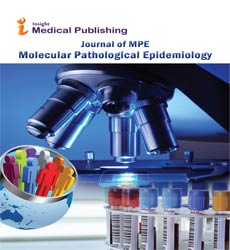From Histology to Molecules
Neishaboori N
Pathology Department, School of Medicine, Oregon Health & Science University, 3181 SW Sam Jackson Park Rd, L113, USA
- *Corresponding Author:
- Neishaboori N
Pathology Department, School of Medicine
Oregon Health & Science University, 3181 SW Sam Jackson Park
Rd., L113, USA
Tel: 8325400098
E-mail: neishabo@ohsu.edu
Received date: August 14, 2017; Accepted date: August 17, 2017; Published date: August 29, 2017
Citation: Neishaboori N. From Histology to Molecules. J Mol Pathol Epidemiol. 2017, 2: 3.
Copyright: © 2017 Neishaboori N, This is an open-access article distributed under the terms of the Creative Commons Attribution License, which permits unrestricted use, distribution and reproduction in any medium, provided the original author and source are credited.
Editorial
Comprehensive molecular genetic studies accelerate our understanding of cancer biology and have led to new diagnostic and therapeutic methods. Large scale ongoing research projects result in growing literature. Incorporating genetic tests into clinical practice reveals surprising genetic similarities across different tumors (i.e. different tissues of origin with completely different morphology). A remarkable example is the identification of HER-2 mutation or amplification in both breast and gastric cancer with clinical response to the same target therapy. On the other hand, tumors which were conventionally grouped together turned out to have different biology and genetic profiles. Pediatric brain tumors are one of the examples of the latter. New WHO classification of brain tumor, introduced new diagnostic categories of integrated diagnoses based on a combination of morphologic and molecular diagnostic characteristics of the lesion. These tumors used to be categorized with their adult counterparts based on morphology.
Many types of cancer have a number of molecular subtypes which were not known a few years ago. Each group may represent different prognoses and therapeutic efficacy (targeted therapy or conventional) to the extent that some old medical studies need to be revised or re-interpreted. Of note, some genetic or morphologic subclasses demonstrate different incidences among epidemiologic groups, including age, ethnicities and environmental exposure that need to be considered in rendering a diagnosis. A breast tumor in 30-yearold female usually prompts additional genetic evaluation. A tumor with particular morphology in the colon is more likely to have specific genetic defects. A tumor with unusual morphologic appearance may have developed as a result of radiation exposure.
New discoveries in inherited cancer predisposing syndromes allow us to detect the potential risk of distinct associated secondary conditions in patients and may warrant screening tests for their relatives. An interesting example is a sebaceous neoplasm in the skin may raise the possibility of a genetic syndrome with increased risk of a subclass of colon cancer.
Currently, some disciplines like hematopathology heavily rely more on molecular tests in diagnosis, classification, monitoring, and prognosis of hematolymphoid malignancies. In this particular field, morphology and even immunophenotype of the tumor do not always differentiate subtypes of leukemia/ lymphomas. Many of these diseases are redefined based on a combination of morphology, biology, and molecular criteria.
Integrating molecular tests in clinical practice requires a comprehensive training to enable providers to order the appropriate test, interpret results, understand the limitations of those tests and that will not be without challenges.
At this time the histologic evaluation of tumors still remains the primary diagnostic tool in current clinical practice. It is the best way to evaluate the quality of specimen and adequacy of the sample and to ensure the appropriate cells have been selected for molecular analysis. Some characteristics of the tissue such as tumor heterogeneity and the immune response to the tumor (which is the most important predictive factor for benefit of immunotherapy) can only be assessed by morphology. But, it seems that further application of molecular tests will play a more important role in the near future medical practice.
Open Access Journals
- Aquaculture & Veterinary Science
- Chemistry & Chemical Sciences
- Clinical Sciences
- Engineering
- General Science
- Genetics & Molecular Biology
- Health Care & Nursing
- Immunology & Microbiology
- Materials Science
- Mathematics & Physics
- Medical Sciences
- Neurology & Psychiatry
- Oncology & Cancer Science
- Pharmaceutical Sciences
